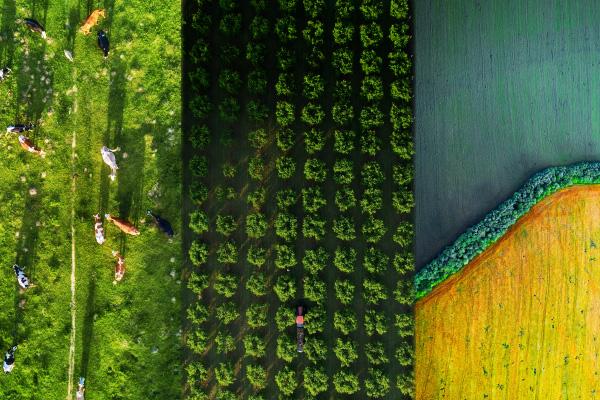EU agricultural outlook 2022-32: production growth of major agricultural sectors to slow down
The EU agricultural sector’s resilience has been heavily tested in the last two years. On top of the trade disruptions and increased commodity prices caused by the post-Covid recovery, the Russian invasion of Ukraine led to even higher prices of inputs and energy. As a result, food inflation soared and trade was further disrupted. Moreover, climate change is resulting in more frequent adverse and extreme weather events, and animal disease outbreaks. In light of these disruptions, combined with changes in consumption trends, the analysis presented in the outlook report foresees a slowdown in the production growth of major EU agricultural sectors. In the given set of assumptions considered, production of some crops is expected to stagnate or even slightly decline, while milk and meat production would decline.
In his opening speech delivered at the Outlook conference last week, Commissioner Wojciechowski said: “In order to achieve a truly resilient food system, we must tackle the issues that have continued to affect our farming communities – such as the decline in family farms and the increasing average age of farmers. These developments, identified in the latest agriculture census, provide a wake-up call. I am convinced that the CAP provides Member States with a strong set of tools to better support their farming communities and help them deliver sustainable food security for society. Over the past number of years, we have worked closely with Member States to devise strong strategic plans. Now it is time to start implementing them.”
Total EU cereal area is projected to decrease marginally to 57.2 million hectares by 2032, driven by a decrease in barley and maize. The EU will remain a net exporter of wheat and barley and a net importer of maize and rice. Food consumption of cereals in the EU will slightly increase (+3.9%), but as feed use will decrease (-6.1%), the overall EU domestic use is expected to remain stable. The shift to plant-based diet could lead to a growing importance of protein alternatives to meat, but they are assumed to still represent only a very small market share.
This year’s medium-term outlook provides an overview of food security in the EU using a selected set of indicators: self-sufficiency rates, net trade, diversification of imports and exports, and households’ expenditure on food.
The EU remains self-sufficient in most considered products in 2032 and is able to generate surpluses, which contribute to global food supply, in particular for wheat and dairy products. This reflects the results of successive CAP reforms over the years thanks to which the EU continues providing abundant, high quality, safe and nutritious food to its own population and globally. However, due to agro-climatic and market conditions, the EU will remain reliant on imports for products such as tropical fruit, rice and soya beans, although there will be some improvements done.
The current record-high food inflation rates are not expected to persistently impact the share of household expenditure on food over the medium term. This is because consumers are likely to adjust their spending habits to more basic products if prices remain high rather than reducing their overall food consumption. It will come as no surprise though that the recent economic crises can potentially contribute to increasing inequalities.



